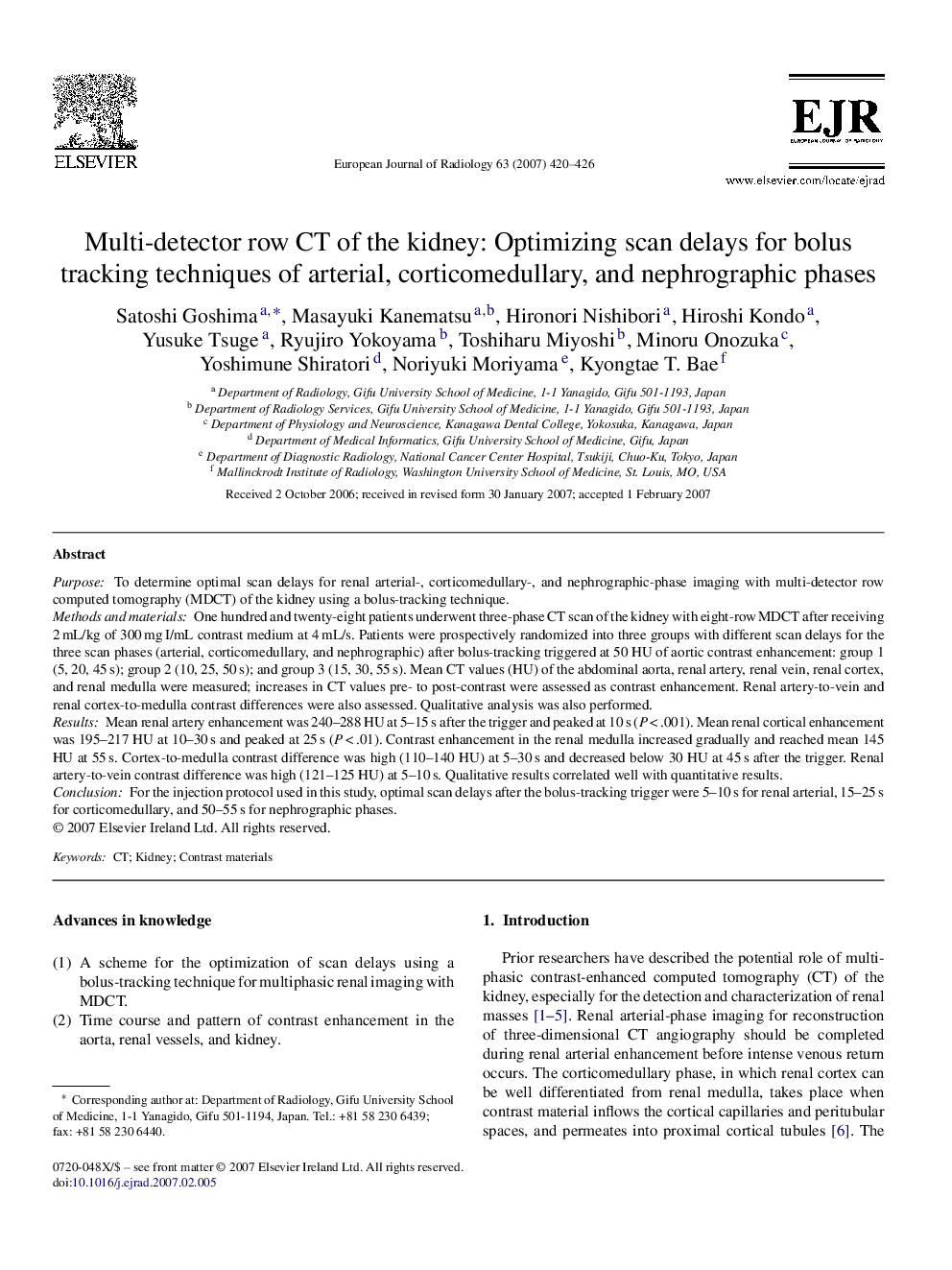| کد مقاله | کد نشریه | سال انتشار | مقاله انگلیسی | نسخه تمام متن |
|---|---|---|---|---|
| 4227994 | 1609848 | 2007 | 7 صفحه PDF | دانلود رایگان |

PurposeTo determine optimal scan delays for renal arterial-, corticomedullary-, and nephrographic-phase imaging with multi-detector row computed tomography (MDCT) of the kidney using a bolus-tracking technique.Methods and materialsOne hundred and twenty-eight patients underwent three-phase CT scan of the kidney with eight-row MDCT after receiving 2 mL/kg of 300 mg I/mL contrast medium at 4 mL/s. Patients were prospectively randomized into three groups with different scan delays for the three scan phases (arterial, corticomedullary, and nephrographic) after bolus-tracking triggered at 50 HU of aortic contrast enhancement: group 1 (5, 20, 45 s); group 2 (10, 25, 50 s); and group 3 (15, 30, 55 s). Mean CT values (HU) of the abdominal aorta, renal artery, renal vein, renal cortex, and renal medulla were measured; increases in CT values pre- to post-contrast were assessed as contrast enhancement. Renal artery-to-vein and renal cortex-to-medulla contrast differences were also assessed. Qualitative analysis was also performed.ResultsMean renal artery enhancement was 240–288 HU at 5–15 s after the trigger and peaked at 10 s (P < .001). Mean renal cortical enhancement was 195–217 HU at 10–30 s and peaked at 25 s (P < .01). Contrast enhancement in the renal medulla increased gradually and reached mean 145 HU at 55 s. Cortex-to-medulla contrast difference was high (110–140 HU) at 5–30 s and decreased below 30 HU at 45 s after the trigger. Renal artery-to-vein contrast difference was high (121–125 HU) at 5–10 s. Qualitative results correlated well with quantitative results.ConclusionFor the injection protocol used in this study, optimal scan delays after the bolus-tracking trigger were 5–10 s for renal arterial, 15–25 s for corticomedullary, and 50–55 s for nephrographic phases.
Journal: European Journal of Radiology - Volume 63, Issue 3, September 2007, Pages 420–426